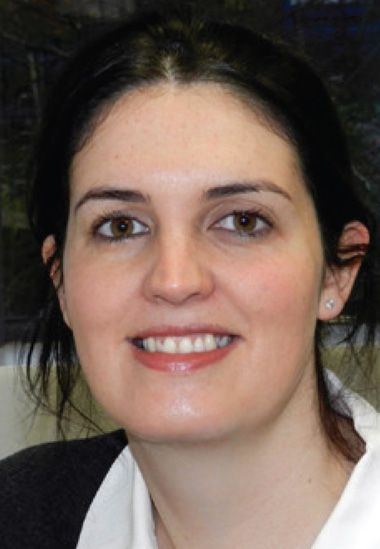UCD Research - February 2023
Intramammary antimicrobial sales in Ireland
Recent research by Dr Catherine McAloon MVB DVMS Dip ECBHM MRCVS, European Specialist in Bovine Health and Lecturer in Farm Animal Clinical Studies, UCD, has identified trends, most importantly the increased use of DC products and near universal use of blanket DC therapy, that raise significant concerns for the Irish dairy industry
In association with


Dr Catherine McAloon
Introduction
The European Union recently introduced new legislation on veterinary medicines (Regulation 2019/6), which seeks, among other aims, to reduce antimicrobial (AM) use in food animals, particularly prophylactic use. This new legislation will have major implications on AM prescribing and use in the EU. AM usage data in farm animal production are needed to objectively monitor progress. With these data, it is possible to conduct benchmarking (nationally, by sector, by prescriber, and at farm-level) and to allow critical evaluation of usage patterns, both for domestic use and international comparison. In a number of European countries, the objective measurement of on-farm antibiotic usage has proved central to progress towards improved antibiotic stewardship in farm animal production (More, 2020). In Ireland, a national AM usage database is under development. To date intramammary AM sales data are currently the only avenue that is readily available to gain insights into on-farm usage of AMs relevant to mastitis control within the Irish dairy industry.
Results
Analysis of intramammary AM sales data from 2013-2020 collated from multiple sales sources were obtained and analysed according to the methods outlined by McAloon et al (2021). The number of dairy cows in Ireland at risk of dry cow (DC) therapy was calculated using cow census data obtained from Eurostat and using metrics for replacement rate and calving interval obtained from ICBF. Intramammary antimicrobial sales were analysed according to product type as well as by WHO classification (highly important/critically important [CIA] or highest priority critically important [HP CIA]) and subsequently by the European Medicines Agency (EMA) classification system (Category A-D).
Comparing more recent analyses with the work of More et al (2017) which included analysis of intramammary antimicrobial sales back to 2003, we found a decrease in the estimated in-lactation (LC) intramammary AM usage during 2003-19, from 0.66 to 0.43 defined course dose per cow per year (DCD vet per cow per year). This metric of ‘DCD vet per cow year’ was chosen with care as it is a cow adjusted figure and (although not straightforward) does allow for some international comparisons. This decrease occurred throughout the period, from 2015 (0.48) to 2019 (0.43), but with a slight increase again to 0.44 DCD vet per cow per year for the year 2020. Almost all LC therapy includes critically important AMs (defined as CIAs by the WHO), and there has been a slow increase in tubes sold containing at least one HP CIA across the period.
In 2015, eight per cent of the total LC tubes sold contained at least one HP CIA, and this increased to 13 per cent of the LC tubes sold in 2020.
These HP CIA active ingredients were either third or fourth generation cephalosporins and are classed by the EMA as Category B/Restrict use, meaning they are critically important to human medicine and their use should be curtailed to protect their effectiveness in human medicine. They should only be used in veterinary medicine when no other drug is clinically effective from lower categories C or D or, indeed, only on foot of AM susceptibility testing justifying their use.
We also found a decrease in the estimated DC intramammary usage during 2015-19, from 1.09 to 0.95 DCD vet per cow per year, respectively, but a worrying increase to 1.13 DCD vet per cow per year in 2020. Therefore, the estimated coverage of DC therapy in 2019 was 95 per cent, rising again to 100 per cent of cows eligible for DC treatment in 2020. During 2003-19, approximately half of the total DC AM administered was from tubes containing at least one CIA, ranging from 49 per cent in 2003 to 41 per cent in 2019. In recent years, there has been a sharp increase in the percentage of DC tubes sold containing at least one HP CIA (a fourth generation cephalosporin, again classed as category B/Restrict in the recent EMA guidelines) from 6 per cent in 2015 to 11 per cent in 2020.
Our analyses must be interpreted with some caution, given the potential for product to be sold and not used (such as stockpiling of product). Further, there is the potential for leakage of intramammary products into off-label use in heifers or in suckler cows. In each case, the sales data would overestimate actual on-farm use.
Conclusions
The trends described here, most importantly the increased use of DC products and near universal use of blanket DC therapy, as well as ongoing use of HP CIA products in both LC and DC therapy, raise significant concerns for the Irish dairy industry. Regulation 2019/6 frames a major change in how DC therapy is used, and in the importance of preserving HP CIA products, such as fourth generation cephalosporins which are classed by the EMA as products that should be restricted in animal use unless absolutely necessary.
Notwithstanding the above-mentioned challenges associated with potential discrepancies between intramammary AM sales and usage, similar methods were used for analysis from 2003-2020 and the key themes remain, in that major changes will be needed in prescribing practices and for industry education and collaboration to deliver the Veterinary Medicines Regulation safely and effectively. International experience, including from Denmark and the Netherlands has demonstrated the central role played by farm and prescriber-level benchmarking in the substantial and ongoing reduction in AM usage, both nationally and in specific sectors. Benchmarking would likely achieve a similar impact in Ireland. Indeed, it may not be possible to achieve and sustain similar progress towards improved AM stewardship in its absence.
In association with

















